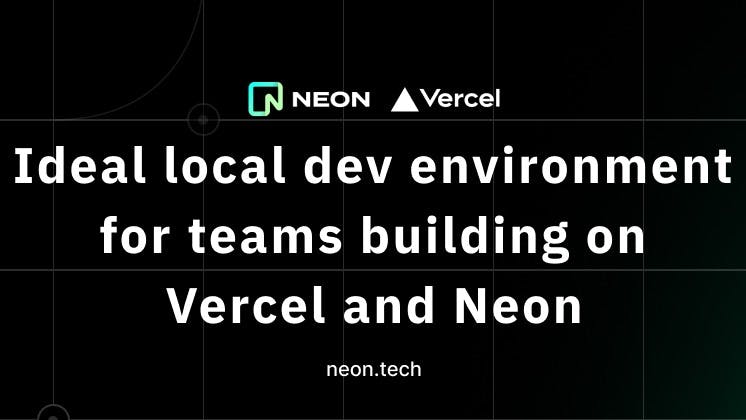Your team’s most valuable resource isn’t always documented—it’s the unspoken expertise they rely on daily. Known as implicit knowledge, this hidden asset shapes decisions, fuels innovation, and drives efficiency. Yet, many organizations overlook its potential.
As workplace trends shift toward collaboration and dynamic learning, the ability to harness and share implicit knowledge has become a critical advantage. Ready to unlock it? Let’s jump in.
Implicit Knowledge: Definition, Benefits, and How to Share
What Is Implicit Knowledge?
Some knowledge lives in actions rather than words. Implicit knowledge deals with the unspoken expertise individuals gain through experience, enabling them to handle tasks intuitively and solve problems efficiently.
It’s invaluable in organizations. Even data-driven business leaders see it as a cornerstone for fueling innovation and driving organizational agility.
Check out how to capture the knowledge in your organization in one, highly searchable place:
Implicit knowledge definition
Implicit knowledge refers to the practical know-how people develop over time. Unlike explicit knowledge, which is clearly documented, or tacit knowledge, which is highly personal and intuitive, implicit knowledge bridges the gap by being actionable yet hard to articulate. It plays a vital role in driving workflows, solving problems, and improving decision-making.
Implicit knowledge examples:
- A team leader detecting workflow inefficiencies without needing formal data
- A technician troubleshooting system malfunctions based on past patterns
- A customer service agent resolving issues smoothly through prior experience
Implicit vs. explicit vs. tacit knowledge
Many types of knowledge exist within an organization. Here are the three primary types and how they’re different.:
| Aspect | Explicit knowledge | Tacit knowledge | Implicit knowledge |
| Definition | Documented knowledge that is easy to share and access | Deeply intuitive and tied to personal experience | Practical know-how developed through experience |
| Examples | Training manuals, company policies, process guides | Emotional intelligence, leadership instincts | Workflow shortcuts, task-specific optimizations |
| Transferability | Easily transferred via written documents or instructions | Difficult to share without close interaction | Shared through observation, mentoring, or practice |
| Nature | Structured and systematic | Personal and often unconscious | Semi-structured and action-oriented |
Organizations that identify and leverage implicit knowledge can enhance team dynamics, reduce inefficiencies, and uncover hidden expertise. By ensuring this type of knowledge is shared effectively, businesses gain a competitive advantage that drives long-term success.
The Benefits of Implicit Knowledge
Implicit knowledge is an untapped resource that offers significant advantages for businesses. Leveraging this hidden expertise can lead to improved workflows, better decision-making, and a stronger, more engaged workforce.
Here’s how implicit knowledge benefits organizations:
Improves efficiency in business processes
- Employees with implicit knowledge instinctively handle tasks, reducing delays caused by over-reliance on formal guidelines
- Streamlined workflows emerge as experienced employees optimize processes based on past successes
- Cross-functional teams work more cohesively when unspoken expertise fills gaps between roles
Reduces hiring costs
- Experienced employees can mentor new hires by sharing implicit knowledge through observation and collaboration
- The reliance on expensive, external training programs is minimized when implicit knowledge is actively shared
- Retaining skilled employees with valuable expertise reduces turnover and recruitment expenses
Enhances employee engagement
- Employees feel valued when their unspoken expertise is recognized and leveraged
- Opportunities for sharing knowledge foster collaboration and a sense of ownership in organizational success
- Peer-to-peer learning creates a culture of trust, boosting morale and team dynamics
Impacts decision-making and problem-solving
- Teams equipped with implicit knowledge can make quicker, more accurate decisions based on intuition and experience
- Problem-solving becomes proactive, as employees recognize patterns and address challenges before they escalate
- Implicit knowledge enhances creative problem-solving by providing real-world context and practical insights
Fosters innovation and adaptability
- Organizations with a strong culture of implicit knowledge sharing are better equipped to adapt to market changes
- Employees innovate faster when they can draw on shared, unspoken expertise to test and refine new ideas
- Diverse perspectives emerge as implicit knowledge circulates across teams
Preserves organizational memory
- Documenting and sharing implicit knowledge ensures it remains within the organization when employees leave
- Prevents knowledge loss during transitions, keeping operations stable and efficient
By understanding the benefits of implicit knowledge, you can unlock the hidden potential within your teams. The next step is learning how to harness this invaluable resource effectively.
Harnessing Implicit Knowledge in Your Organization
📮 Insight: On average, a knowledge worker has to connect with 6 people to get work done. This means reaching out to 6 core connections daily to gather essential knowledge they need to do their jobs, align on priorities, and move forward.
The struggle is real—constant follow-ups, version confusion, and visibility black holes erode team productivity. A centralized platform like , with Connected Search and AI Knowledge Manager, tackles this by making context instantly available at your fingertips.
Unlocking and leveraging implicit knowledge within your organization requires intentional strategies that encourage sharing and foster collaboration. Tools like Knowledge Management provide a centralized platform to organize, document, and share unspoken expertise effectively.
Here are practical ways to identify, share, and preserve this hidden expertise:
Encourage sharing and reward participation
- Create an environment where employees feel comfortable sharing their knowledge through storytelling, group discussions, or casual conversations
- Recognize and reward employees who actively contribute their expertise, fostering a sense of appreciation and motivation
- Use team meetings or brainstorming sessions to highlight and celebrate examples of shared implicit knowledge
Peer learning programs and shadowing
- Introduce mentorship programs where experienced employees guide newer team members through observation and practice
- Implement shadowing initiatives, allowing employees to learn workflows and techniques by observing seasoned peers in real-time scenarios
- Facilitate cross-departmental collaboration to expose teams to diverse perspectives and broaden their knowledge base
Create a learning and development culture
- Foster a culture of continuous learning by encouraging employees to document and share insights gained from hands-on experience
- Provide opportunities for skill development through workshops, knowledge-sharing sessions, and feedback-driven learning environments
- Integrate informal learning into daily operations, making knowledge-sharing a natural part of the workplace culture
Utilize tools for knowledge management
Effective knowledge management tools can simplify the process of capturing and sharing implicit knowledge, ensuring it remains accessible across teams.
Document management and collaboration
Provide a comprehensive platform to create, organize, and share knowledge seamlessly. Its intuitive features support collaboration, making it easier for teams to preserve and transfer implicit knowledge.

Tools like Chat enable real-time communication, allowing teams to discuss, share insights, and clarify workflows directly within the platform. This ensures that implicit knowledge is captured in context and remains accessible to everyone.
Creating and managing knowledge bases
With Docs, you can build detailed knowledge bases that house workflows, guides, and insights. These knowledge bases make unspoken expertise accessible, helping teams scale processes and boost efficiency.
Start with the Knowledge Base Template to quickly build and organize your resources.
It will help you:
- Simplify the creation of comprehensive knowledge bases with pre-built structures
- Enable easy access and updates to workflows, guides, and documentation
- Promote consistency across teams by centralizing implicit and explicit knowledge
By implementing these strategies, you can ensure that implicit knowledge becomes a shared resource, driving innovation, enhancing collaboration, and improving knowledge sharing. However, managing implicit knowledge comes with challenges, and addressing these is essential for long-term success.
Challenges in Managing Implicit Knowledge
Implicit knowledge is invaluable but can be tricky to manage due to its unspoken and intuitive nature. Below are the key challenges, their impact, and practical ways to overcome them.
Challenge: Difficulty in identifying and capturing knowledge
Implicit knowledge often remains hidden because employees don’t recognize its value or know how to articulate it. For instance, a sales representative may rely on instincts developed through years of client interactions, but they struggle to explain their approach to others.
Solution
- Conduct regular knowledge audits to identify unspoken expertise within teams
- Encourage employees to share workflows and insights through storytelling or collaborative sessions
- Pair experienced employees with new hires in hands-on roles to naturally surface hidden expertise
Challenge: Dependence on individual employees
When critical expertise resides with a single employee, the organization becomes vulnerable to disruptions if they leave. For example, a seasoned IT administrator may have shortcuts to troubleshoot systems, but without documentation, the team is left scrambling when they’re unavailable.
Solution
- Create role transition plans that include shadowing and mentoring
- Use documentation tools to capture recurring processes and insights
- Start small by documenting high-impact tasks first, such as troubleshooting steps or client onboarding workflows
Challenge: Limited knowledge-sharing culture
Employees may hesitate to share their knowledge due to fear of judgment or a lack of incentives. This creates silos where vital information is inaccessible. Transferring implicit knowledge in such cases becomes nearly impossible, as a product manager might hoard valuable insights about past project challenges, preventing the team from learning.
Solution
- Foster a collaborative culture with incentives for sharing knowledge
- Recognize and reward employees who actively contribute to peer learning
- Highlight successful knowledge-sharing stories in team meetings to encourage participation
Challenge: Inefficient knowledge-sharing processes
Inconsistent or outdated methods, like fragmented emails or isolated conversations, can hinder the effective transfer of implicit knowledge. Teams often spend unnecessary time locating critical information or misinterpret verbal instructions, leading to inefficiencies.
Solution
- Standardize processes for knowledge sharing, such as using collaborative documentation or regular review sessions
- Encourage teams to consolidate key insights into shared platforms to improve accessibility
- Incorporate collaborative exercises, like retrospectives or project debriefs, to capture implicit insights organically
👀Did You Know? According to a 2022 report by Coveo, employees spend an average of 3.6 hours each day searching for information they need to do their job. That’s nearly half the workday lost to inefficiency—highlighting the need for streamlined knowledge-sharing processes.
Challenge: Challenges in measuring impact
Implicit knowledge is intangible, making it difficult to track its influence on business outcomes. For instance, an operations team may improve efficiency through unspoken expertise, but the organization struggles to quantify that improvement.
Solution
- Use analytics tools to track collaboration and workflow efficiency
- Gather feedback from employees about the accessibility and value of shared knowledge
- Regularly update knowledge bases and measure their usage to identify areas for improvement
By addressing these challenges, organizations can unlock the full potential of implicit knowledge and transform it into a shared resource that enhances efficiency, collaboration, and innovation.
Make Unspoken Expertise Work for You
Implicit knowledge drives innovation, adaptability, and smarter decision-making. When supported by a robust knowledge management strategy, it transforms unspoken expertise into a lasting competitive advantage.
By leveraging a knowledge management platform to document critical insights and foster collaboration, organizations can ensure that the knowledge gained from experience is shared effectively, creating a culture of continuous growth and unparalleled success.
Start harnessing the power of implicit knowledge—sign up for today.


Everything you need to stay organized and get work done.














